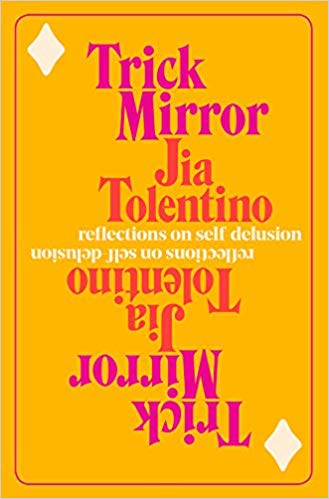You have /5 articles left.
Sign up for a free account or log in.
 Trick Mirror: Reflections on Self-Delusion by Jia Tolentino
Trick Mirror: Reflections on Self-Delusion by Jia Tolentino
Published in August of 2019.
I read Trick Mirror over the academic winter break, during the days when my daughters were home from college. Jia Tolentino is about a decade older than my kids, but her voice felt familiar.
My older daughter will graduate in May. She will have to make her way in a bifurcated labor market, one with very few jobs that pay both a living wage and benefits, and many jobs with neither.
Throughout the nine essays in Trick Mirror, Tolentino captures the experience of navigating life as a twenty-something under late capitalism. In our Uberized economy of gig jobs, insecurity and fragility are now features to be optimized, rather than bugs to be ameliorated.
Tolentino's own story seems to be one mostly of success. The recipient of a full-ride Jefferson scholarship to UVA, she graduates debt-free. After an MFA from Michigan, Tolentino has managed to build a career as a staff writer for the New Yorker, while amassing over 135 thousand Twitter followers.
It is not clear to me if Tolentino's seeming success in the new media economy should influence how we read the chapter The I in the Internet, which is mainly about how social media makes us miserable. For Tolentino, the constant performative nature of maintaining one's Instagram/Facebook/Twitter/Blogosphere persona is as exhausting as it is pointless.
She writes, "along. How did a huge number of people begin spending the bulk of our disappearing free time in an openly torturous environment?"
Perhaps my ideas on the internet are determined by not having grown up with social media. For me, the benefits of the internet - as a platform for online education and research and communication - far outweigh the personal and societal costs of Facebook or Twitter. Plus, I don't spend any time on these platforms.
I'm more sympathetic to the arguments that Tolentino makes in the chapter Always Be Optimizing, which is about (among many other things) the push towards productivity and efficiency.
As a second-generation academic, it is hard for me not to notice how many more hours each week that I seem to work than I remember my Dad working. While at the same time, I don't remember my Dad's academic career being one that was defined by rapid change and permanent scarcity.
In thinking about Trick Mirror, there is much in the book that academics will enjoy reading about and discussing. Everyone who works in higher education, or has a kid who is attending or will attend college, should read the chapter on UVA.
It is rare that someone so close in time to the experience of being an undergraduate can write about higher education with such clarity and wisdom.
In what places does Trick Mirror disappoint? Not in many, as Tolentino is an engaging and smart essayist and critic. As a sociologist, I did find her chapter on wedding and marriage I Thee Dread fascinating, but incomplete. \\
Tolentino is right to critique overly expensive weddings, and to recognize that men report higher levels of happiness than women in marriage. What Tolentino does not discuss is the interplay between marriage and childbearing, and how marital unions provide more stability (on average) in households that include children. Nor does she talk about the impressive decline in divorce rates over the past two decades among college-educated partners.
If my daughters decide to read Trick Mirror, I'd try to point out the positive aspects of the internet and marriage.
At the same time, I'd praise how the book articulates the structural challenges of career development under conditions of a financialized economy, one characterized by stratification and polarization.
For our IHE community, I'd ask what other young writers and thinkers should we be reading and discussing?
Trick Mirror deserves the strong reviews and excellent word-of-mouth that it is receiving. I hope that you read the book so that we can talk about what Jia Tolentino has to say.
What are you reading?




